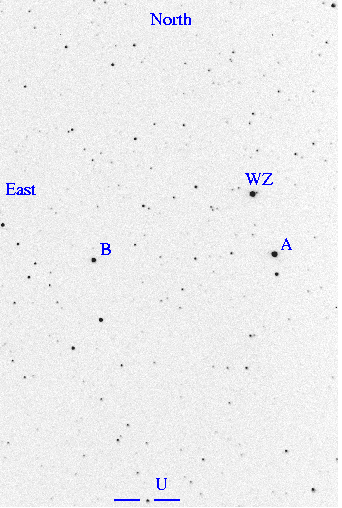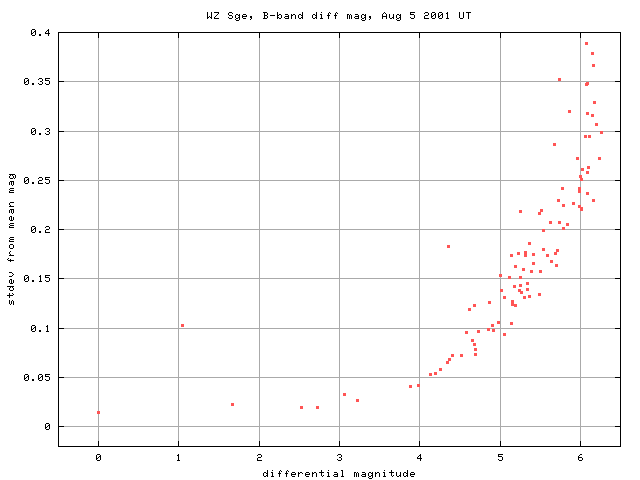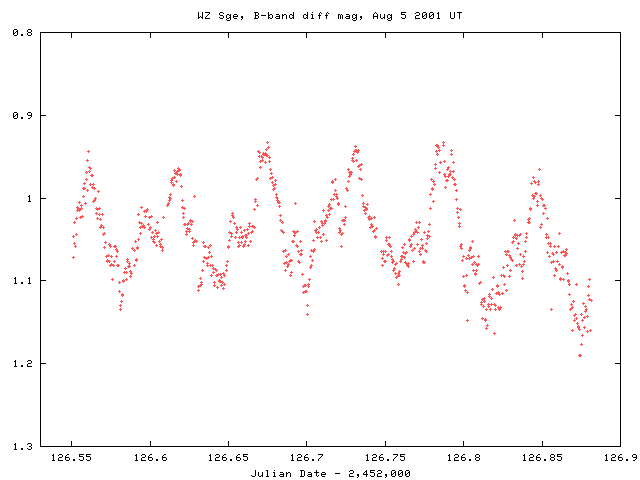
I have re-run the ensemble solution after removing 4 bad frames,
and then removed outliers for WZ Sge due to double detections
in 4 other frames. The revised data file includes a description
of these changes in the header.
MWR
On the night of August 5, 2001 UT, Michael Richmond used the RIT Observatory's 10-inch Meade LX200 telescope to monitor WZ Sge. Susan Brown visited in the early evening to help. All exposures were taken without the focal reducer, through a B-band filter, onto an SBIG ST-8 CCD camera. Each exposure was 20 seconds long. Due to the design of the SBIG software, the time of each exposure is accurate only to +/- 1 second. The field of view was about 17 by 12 arcminutes; a typical example is shown below:

We subtracted dark current from the images and divided by a median twilight sky flatfield. We ran software to detect all stars more than 4 sigma above the sky, then measured the light from each star within a circular aperture of radius 8.8 arcseconds.
The night was clear, but a nearly full moon was only 25 degrees or so from the field. No moonlight fell on the telescope's aperture, but the background sky levels were much higher than usual. Roughly one in seven exposures was slightly trailed, due to a irregularity in the telescope's worm gear. We have not removed those slightly trailed data from our measurements.
We worked from sunset to sunrise, gathering 850 images of the field. We fed all raw instrumental magnitudes of 118 stars on those images into a program which implemented Honeycutt's inhomogeneous ensemble photometry technique. The solution gave most weight to the bright stars "A" and "B" (marked above). The standard deviation from the mean magnitudes in the solution are shown below, as a function of differential magnitude.
The graph below reflects the revised reduction.

The solution placed the mean magnitude of star "A" = GSC 1612.1830 = HD 191083 at zero, and star "B" = HD 351517 at 1.660. The scatter for these bright stars was:
revised version
star mean stdev
A 0.0 0.014
B 1.664 0.023
We used star "B" as a check star to detect errors due to clouds or poor images (which clearly were present in the entire night's run). We discarded any image in which star "B" differed from its mean magnitude by more than +/- 3 times its standard deviation.
The final result is 849 measurements of WZ Sge over a span of seven and a half hours. Here is the light curve:
This is the revised version

You can download an ASCII text file with the measurements:
These are the revised data -- check the header to be sure.
The file has some comments at the top, followed by data lines with 4 numbers per line, like this:
Jul_27.06510 2117.56510 2117.56977 0.046
The columns are:
Last modified 8/22/2001 by MWR.